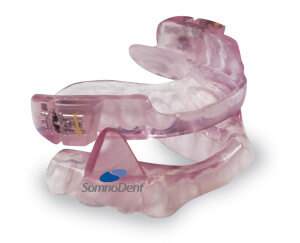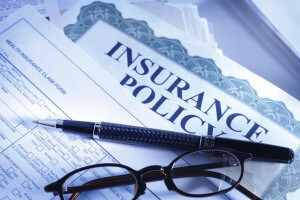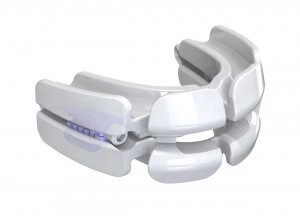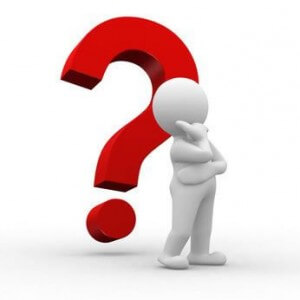A common question asked by those who are interested in a Mandibular Advancement Device is “Will my insurance cover one and how much will I have to pay?”. There are actually several different factors that will determine if and how much your health insurance will cover.
Determining insurance coverage
Dental appliances for Obstructive Sleep Apnea
 Before getting too far ahead, it’s important to understand that in most cases, health insurance companies are not going to cover an appliance that is used for the sole purpose of controlling snoring.
Before getting too far ahead, it’s important to understand that in most cases, health insurance companies are not going to cover an appliance that is used for the sole purpose of controlling snoring.
That being said, most health insurance companies will cover a portion (about half) or in some cases all of the cost of an oral appliance if it has been determined to be a “medical necessity“. Appliances that are custom made by the dentist for the purpose of controlling obstructive sleep apnea are considered a medical necessity and are often covered by private insurance as well as Medicare, Medicaid, and obamacare when certain conditions are met.
Which insurance is responsible for covering this expense? Despite the fact that these devices fit inside of the mouth, they are covered under your health insurance, not dental insurance because they are used to treat a medical condition such as sleep apnea.
 Unfortunately, with so many insurance companies out there, it’s impossible to make a blanket statement concerning all insurance coverage. Since the insurance companies do not publish the amount that they will cover, not even your doctor can give you an exact out of pocket amount until several weeks after getting the insurance process rolling.
Unfortunately, with so many insurance companies out there, it’s impossible to make a blanket statement concerning all insurance coverage. Since the insurance companies do not publish the amount that they will cover, not even your doctor can give you an exact out of pocket amount until several weeks after getting the insurance process rolling.
The entire process can take up to six weeks to complete and even then, you will only be given an estimate and not an exact amount. During this time period, you will be working with an insurance billing expert who will submit your information to the insurance company.
An affidavit of intolerance to CPAP explaining why you are unable to use a CPAP to control your sleep apnea as well as a copy of your sleep study is often submitted to your insurance company for review. From here, your insurance will determine the amount that they are willing to pay.
How about a rough estimate?
 As a general rule, it’s a good idea not to depend on your insurance company to cover 100% of the cost of your oral appliance. Although better insurance companies will pick up all of the costs associated with obtaining an oral appliance, others will only cover about half.
As a general rule, it’s a good idea not to depend on your insurance company to cover 100% of the cost of your oral appliance. Although better insurance companies will pick up all of the costs associated with obtaining an oral appliance, others will only cover about half.
The cost will also depend upon the brand of oral appliance that you choose. There are well over a hundred manufacturers, some are more expensive than others. Expenses typically include the initial consultation followed by a mouthpiece fitting and then follow up visits for adjustments. Oral appliances alone cost somewhere around $2,000 plus your doctors fees. Overall, you should expect the total cost to add up to somewhere in the ballpark of $3,000 on the low end. As mentioned, it is likely that your insurance will cover around half or more so you should anticipate an out of pocket expense of somewhere around $1,500. If they pick up more than half the cost, consider it a bonus. You will, of course, want to plan to pay the higher amount and not expect your insurance to pick up the entire cost.
Mouthguards for snoring
 What if you are interested in obtaining a dental appliance for the sole purpose of controlling snoring that is not related to OSA?
What if you are interested in obtaining a dental appliance for the sole purpose of controlling snoring that is not related to OSA?
Unfortunately, for those who have simple benign snoring that does not involve sleep apnea, most insurance companies are not willing to pay out in such cases. If this is the case, you may be left wondering what options are available aside from paying the full $3,000 plus.
While the bad news is, as mentioned, your insurance will likely not cover the expense of an oral appliance, the good news is that there are several do-it-yourself products that can be purchased online that will help to stop the sound of snoring. These DIY products look and function very similarly to professionally fitted oral appliances yet sell for $60-$80 and can be fitted at home in as little as 5 minutes using a pot of hot water.
What started with one manufacturer in the early 1990’s has grown into a much larger industry with several manufacturers who offer their own version of the at-home mouthguard style dental appliance. Take a look at the comparison chart on the homepage to get an idea of what’s available and the overall cost that you should expect to pay.
Concluding thoughts
 In recent years, there has been quite a bit of confusion regarding oral appliance therapy and insurance coverage. Unfortunately, many people have been led to believe that oral appliances are expensive and most insurance companies do not cover them. While this may have been true in years past, this no longer seems to be the case.
In recent years, there has been quite a bit of confusion regarding oral appliance therapy and insurance coverage. Unfortunately, many people have been led to believe that oral appliances are expensive and most insurance companies do not cover them. While this may have been true in years past, this no longer seems to be the case.
If you have been diagnosed with OSA and would like to try an oral appliance, your best option is to work with a dentist who is familiar with fitting oral appliances and has a billing team that understands the insurance process. Doing so will be a tremendous help when it comes to getting your insurance company to pay for your dental appliance.
Since individual circumstances vary, there is no single resource online that will show the exact amount that your insurance company will cover. The only way to determine the amount that you can expect to pay is to visit your dentist. Even after your initial visit, you will likely not have an exact amount until several weeks later when the insurance process starts to go through.
If you have not been diagnosed with sleep apnea (and have spoken with your doctor and are certain that your snoring is not related to OSA), you may want to consider the less expensive alternative which is a plastic DIY mouthguard that often sells for a very reasonable price.
Share This Post:
